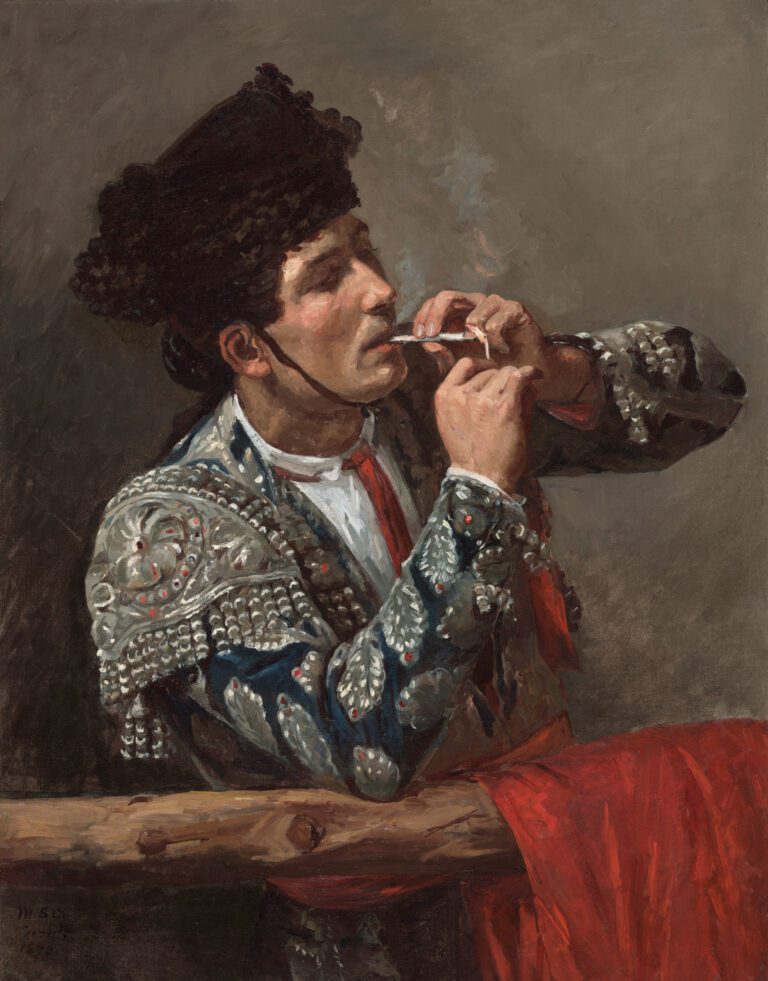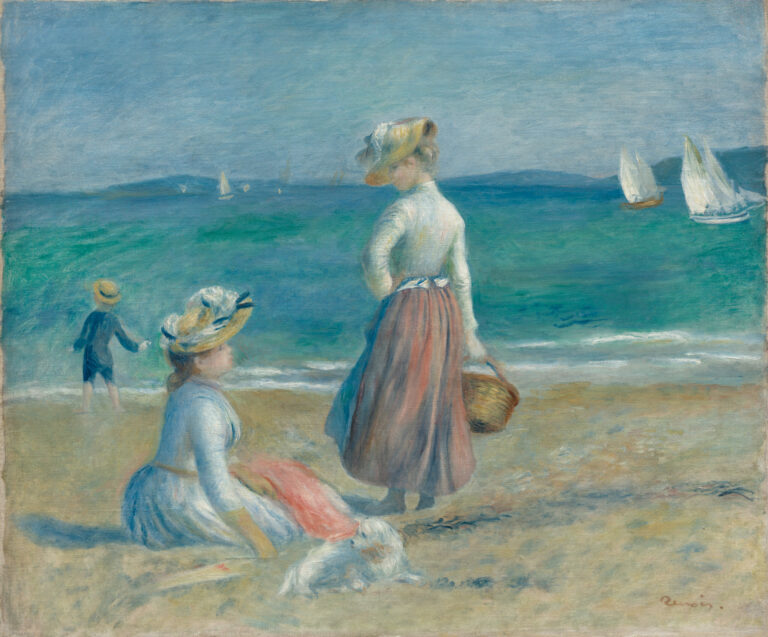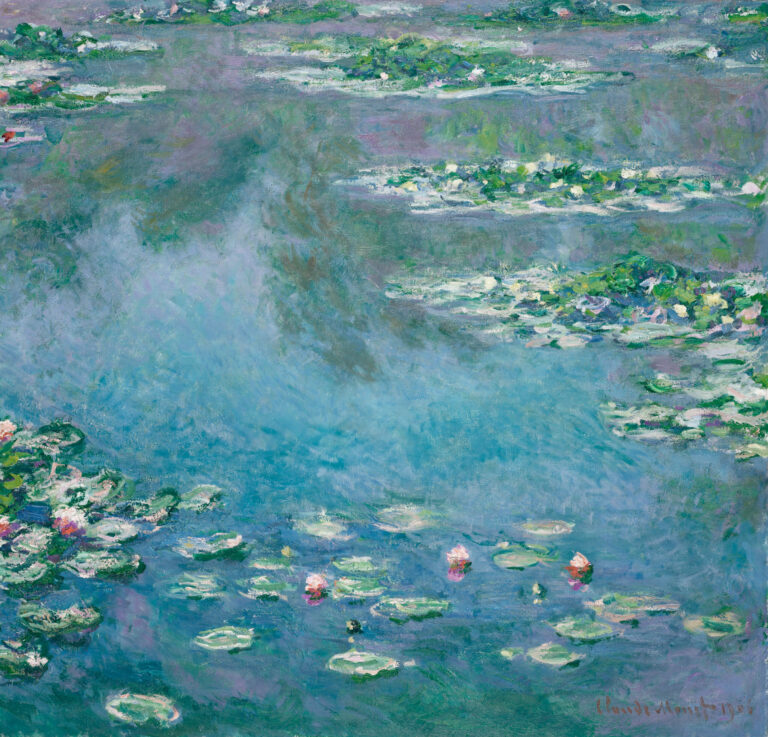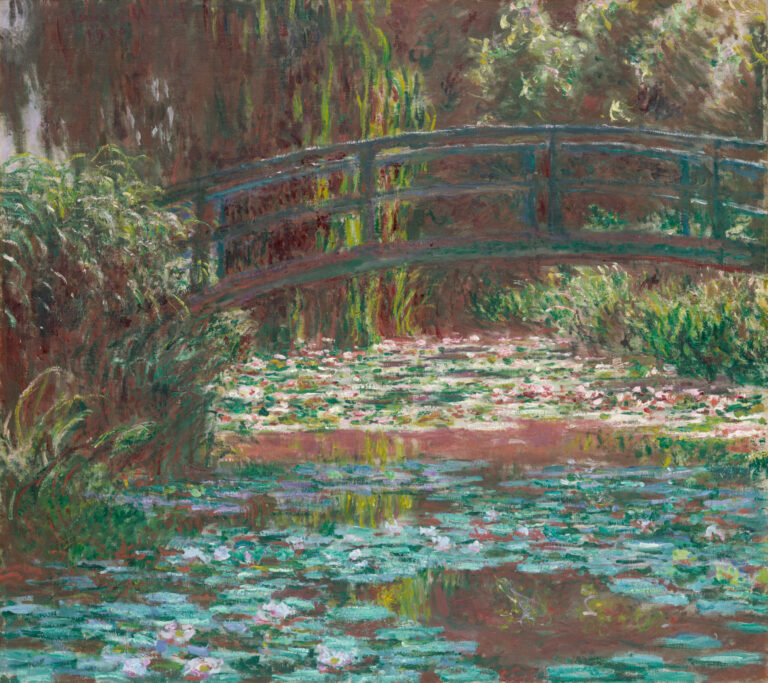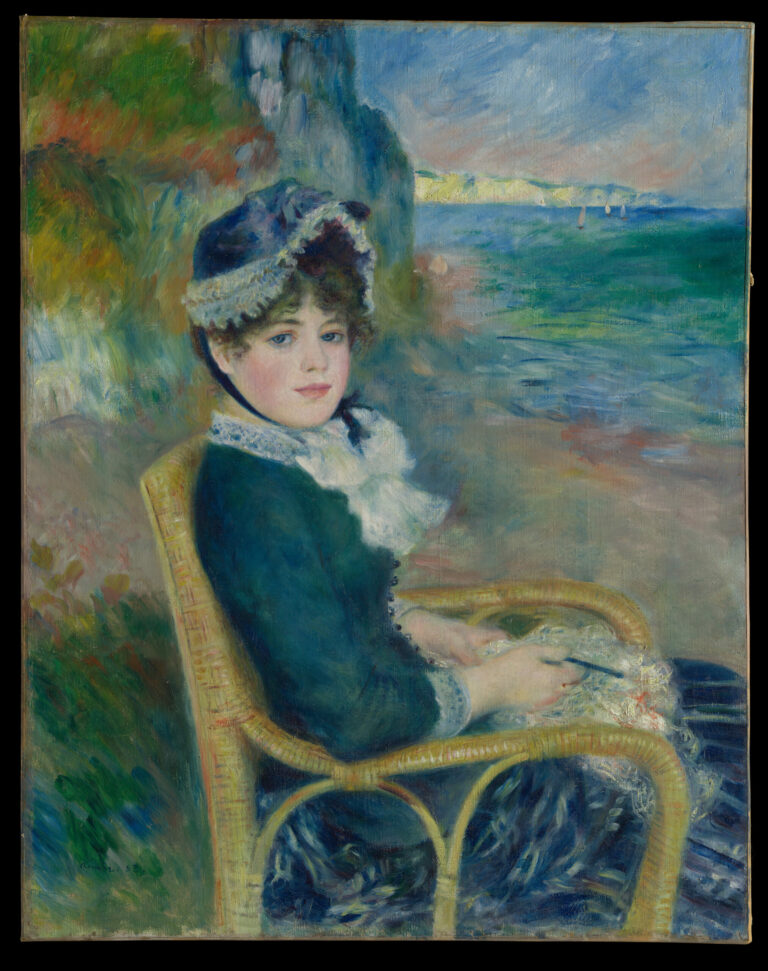Renoir captures a moment of carefree romance bathed in evanescent light.
The couple, caught in a gesture of shared intimacy, exists within a setting of trembling greenery rendered through vibrant, energetic brushstrokes. The young woman radiates at the heart of the composition like an autonomous source of light. Her graceful silhouette, accentuated by a blue ribbon, contrasts with the darker figure of her companion.
The pictorial technique reveals the painter’s mastery in his treatment of light filtering through the foliage, creating a subtle interplay of colored shadows on clothing and skin tones. Each brushstroke—emerald, ochre, turquoise—converses with the pearly whites of the dress to create this atmosphere of fleeting happiness and springtime lightness.
Further information
- The Promenade, by Pierre-Auguste Renoir, 1870
- 81.3 × 64.8 cm
- The J. Paul Getty Museum, Los Angeles
- https://www.getty.edu/art/collection/object/103RJJ
Pierre-Auguste Renoir (1841-1919), son of a tailor and a seamstress, began as a porcelain painter before joining Charles Gleyre’s studio where he met Monet, Sisley, and Bazille. His artistic trajectory, marked by a constant exploration of light and the human figure, oscillated between loyalty to impressionist principles and a return to more classical forms, as in his ‘Ingres-like’ period.
Undisputed master of female portraiture and scenes of modern Parisian life, Renoir developed a unique style where the sensuality of bodies blends with a vaporous and shimmering touch. Despite the rheumatism that cruelly deformed his hands at the end of his life, he never stopped painting, stating that “pain passes, but beauty remains,” a vibrant testimony to that inextinguishable passion for painting that defined his entire existence.


